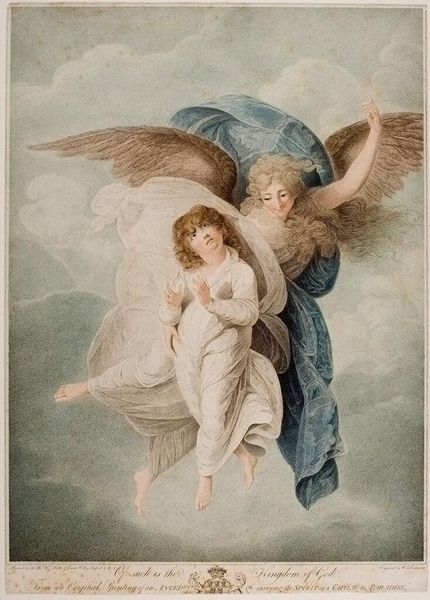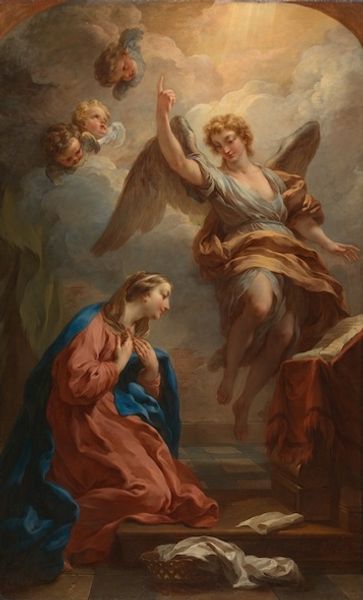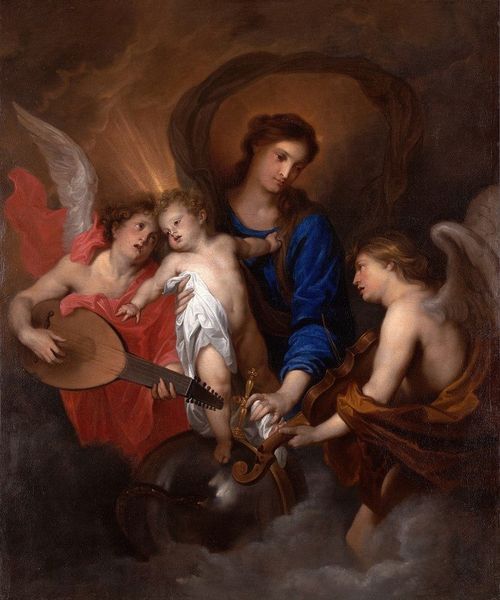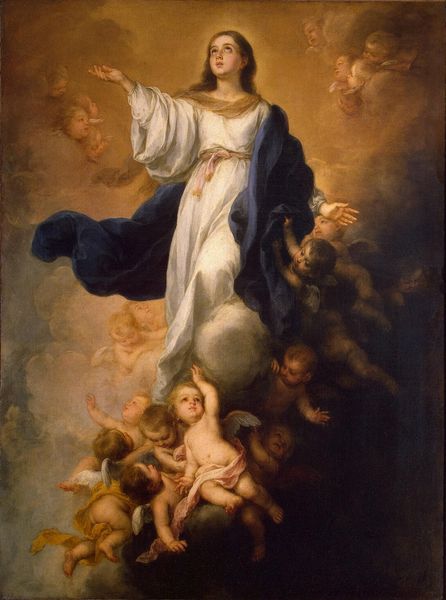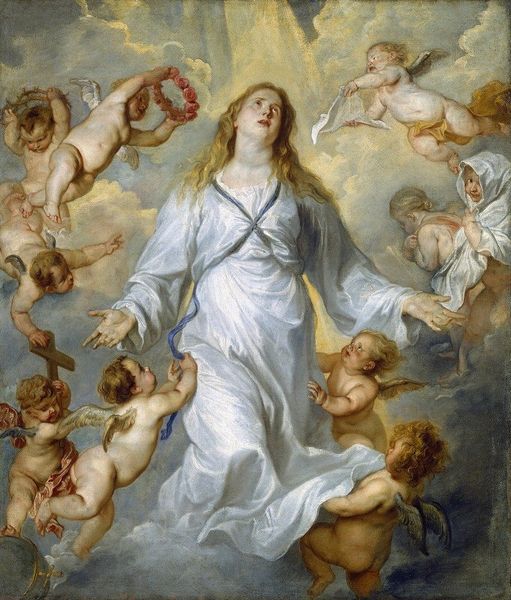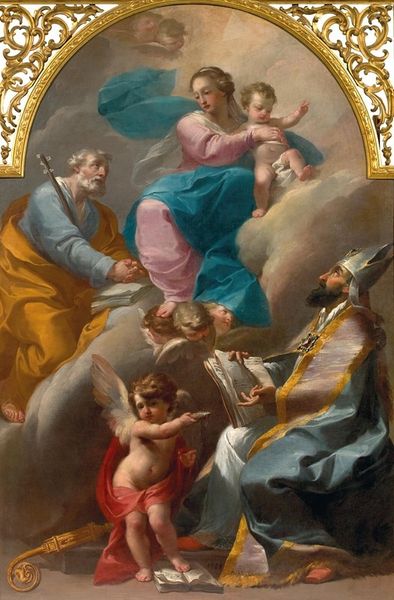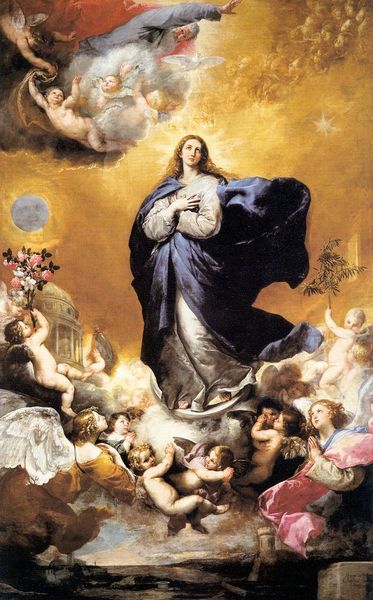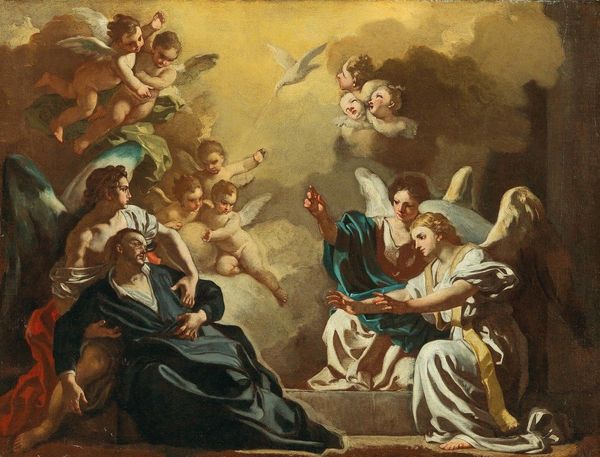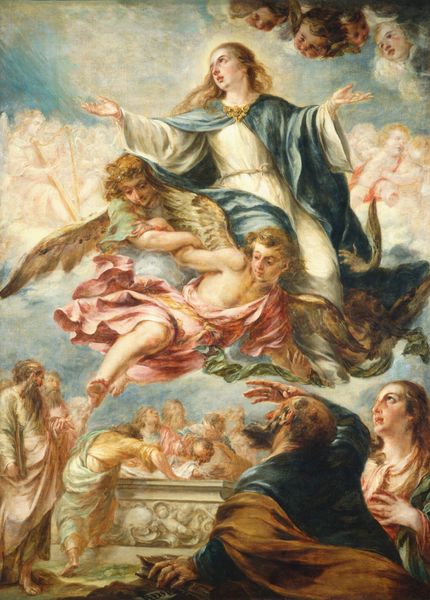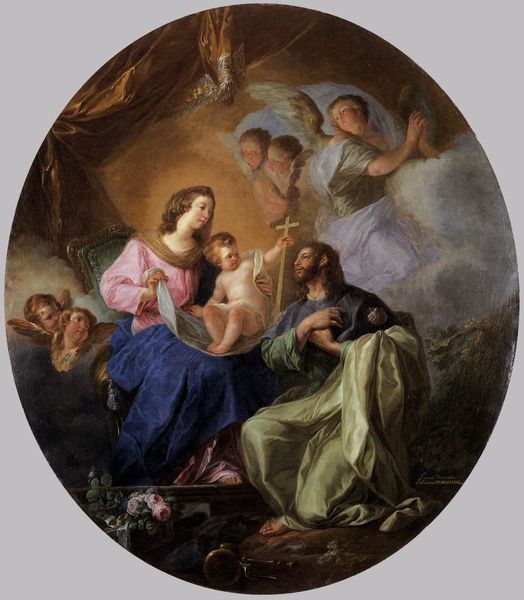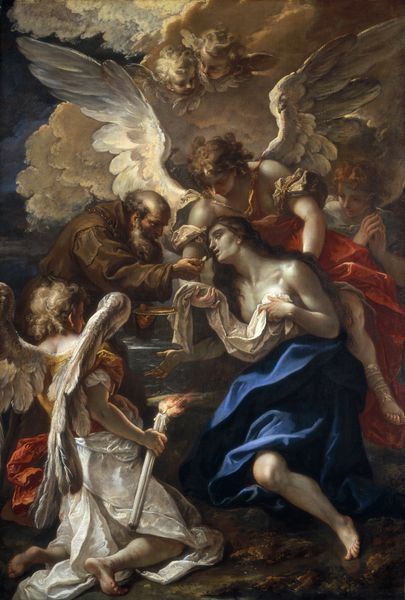
painting, oil-paint
#
allegory
#
baroque
#
painting
#
oil-paint
#
figuration
#
oil painting
#
christianity
#
mythology
#
history-painting
#
angel
#
christ
Dimensions: 225 x 143 cm
Copyright: Public domain
Curator: "The Guardian Angel," a painting rendered in 1656 by Pietro da Cortona, graces the walls here at the National Gallery of Ancient Art in Rome. It's a poignant depiction executed in oil paint. Editor: It strikes me immediately as being deeply unsettling. There's this tension between the sweetness of the subject and an underlying current of anxiety. The child looks vulnerable, and while the angel offers protection, there's a looming darkness in the lower background figures and overall sense of unease created by the colors and contrast. Curator: Absolutely, that dichotomy is central to understanding the piece. The figures here intertwine motifs of Christian guardianship with Baroque sensibilities, that prevalent visual culture of Rome during this time, the period that shapes Cortona's unique imagery of form and movement. This work blends figuration with the underlying mythology that echoes ancient Greco-Roman visual representation that many Baroque painters favored. Editor: Let’s not ignore the socio-political contexts though, it isn't merely about faith. Considering the time, think of the power dynamics inherent in that protective stance. The angel, coded as divine and inherently superior, 'guides' a child and its implications for a world rife with inequity. Does this divine "protection" unintentionally echo a rhetoric of control, subtly mirroring historical justifications for oppression disguised as care? The fact that below there are people flailing helplessly only compounds that sentiment. Curator: That's a very compelling point. However, look at the positioning: the angel isn’t forcefully dragging, but gently leading with the implication of freedom of will for the protected. The light, inarguably, rests more clearly on the angel and child; such placement invites, through symbols, reassurance found in divine protection and is a comforting, even welcome idea. The figures writhing in darkness below are the hazards that most of humanity might face. The angel shields against it. Editor: But it’s precisely this "protection" we must critically examine, who defines the "hazards," and to whose benefit is this structure upheld? Curator: Fair, yet regardless of interpretive disagreements, the core, enduring draw is, at minimum, in its image power that evokes our relationship to hope and our need for guardianship when lost, a feeling that still powerfully speaks. Editor: Agreed. Regardless of whether one sees it as reassurance or indictment, the painting incites that visceral contemplation, making it an important point of departure when viewing our relationship with institutions.
Comments
No comments
Be the first to comment and join the conversation on the ultimate creative platform.

